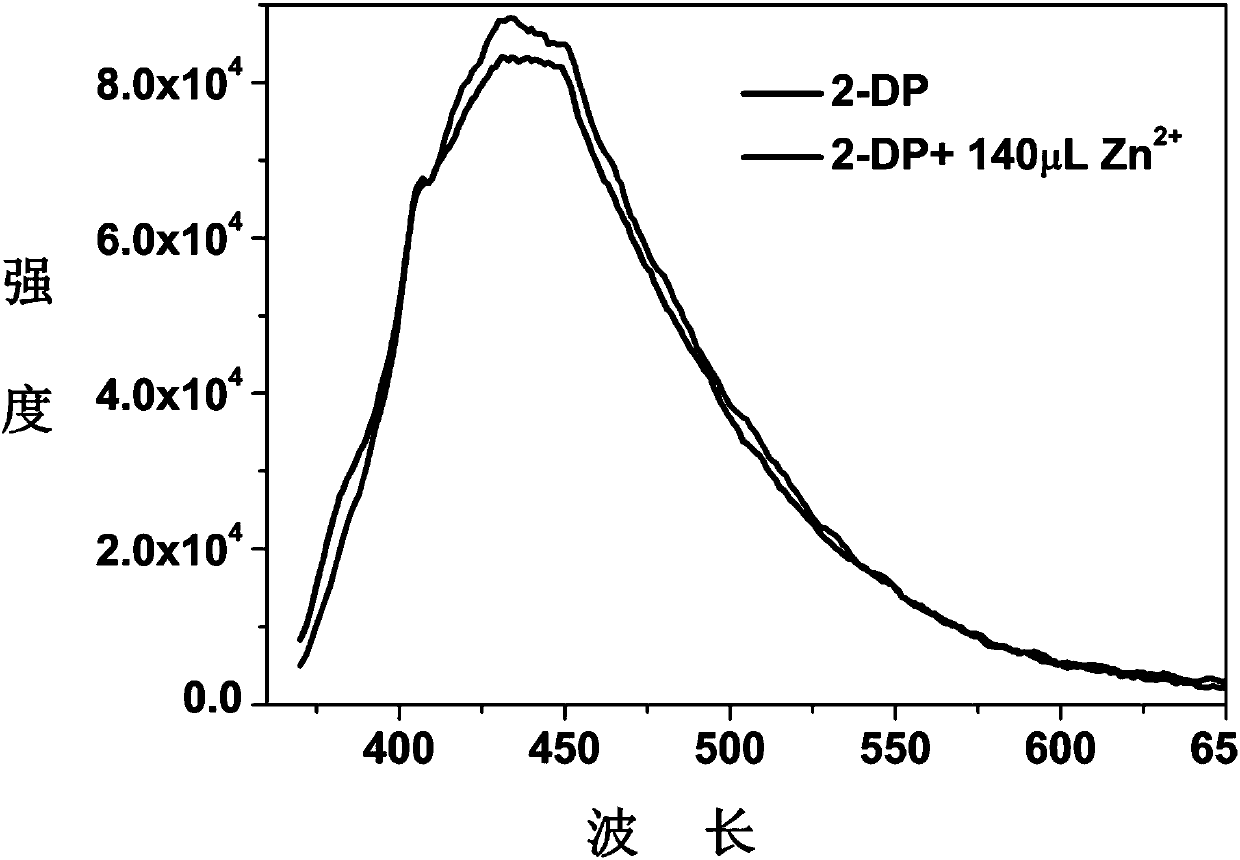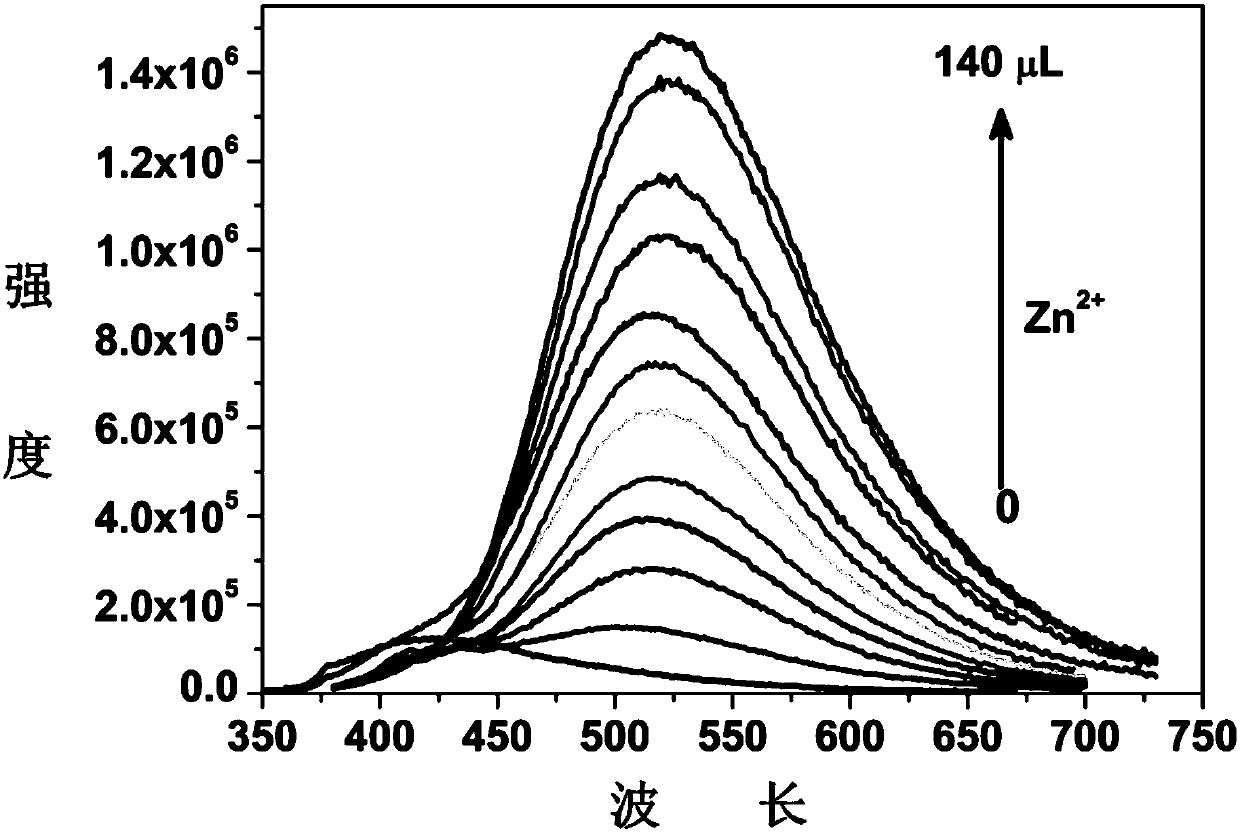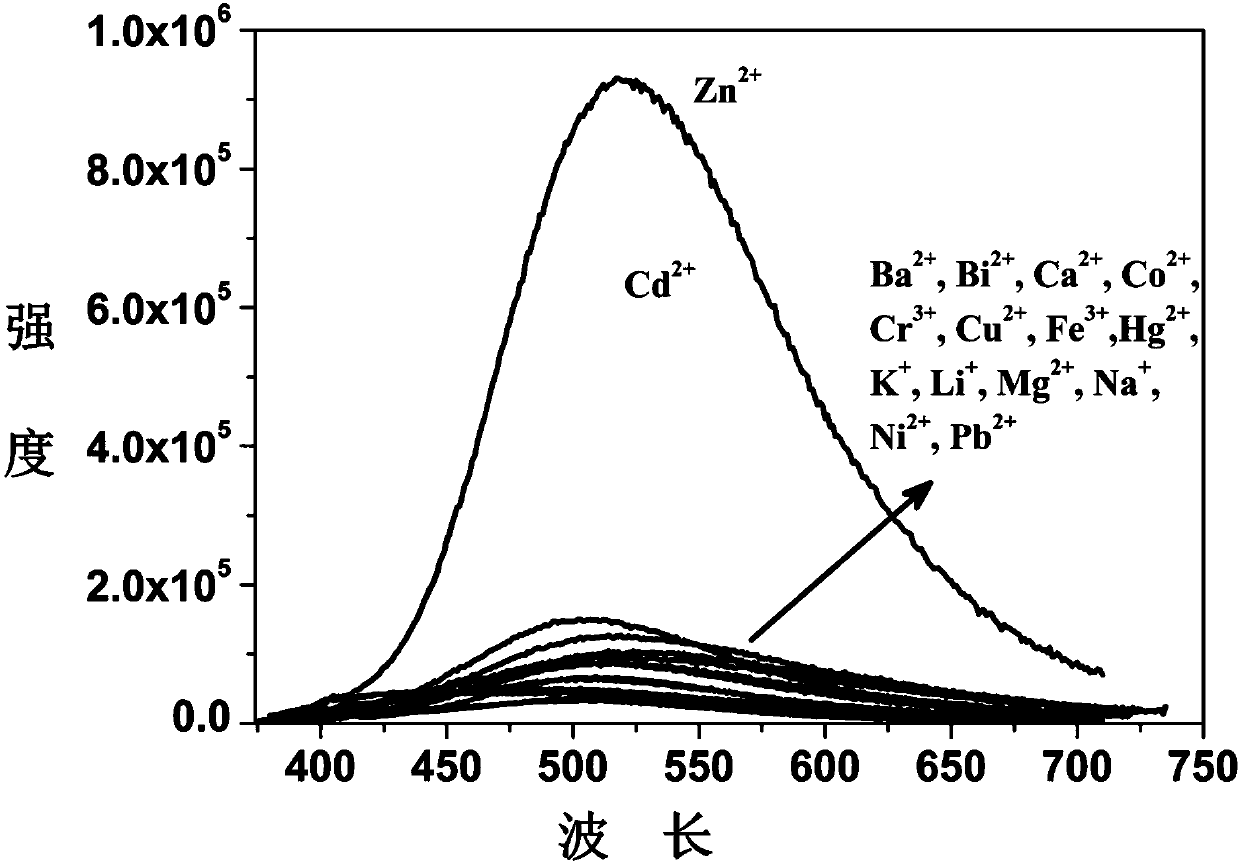Phenanthroline derivative, zinc ion fluorescence probe and application thereof
An o-phenanthroline and fluorescent probe technology, applied in the field of fluorescent ion probes, can solve the problem of weak coordination ability of sodium ions, and achieve the effects of strong resistance to other ions interference, high selectivity, and rapid selectivity
- Summary
- Abstract
- Description
- Claims
- Application Information
AI Technical Summary
Problems solved by technology
Method used
Image
Examples
Embodiment 1
[0063] (1) Recognition of zinc ions by phenanthroline derivatives substituted at the 3-position of 4-(2,2-distyryl)phenyl (hereinafter referred to as "3-DP")
[0064] Add 100μL of 5×10 to a 5mL volumetric flask -4 3-DP solution of M and 1.79×10 -4 M zinc ion aqueous solution 0, 10, 20, 30, 40, 50, 60, 70, 80, 90, 100, 110, 120, 130, 140, 150 μL, THF solution to constant volume. Detect the fluorescence spectrum of the above solution, see figure 2 . The addition of zinc ions made the fluorescence of 3-DP at 417nm gradually decrease, and a new emission peak appeared at 523nm, and the fluorescence peak gradually increased as the amount of zinc ions increased until the amount of zinc ions added reached 140 μL, that is, Zn 2+ The molar ratio with 3-DP is 1:2. Compared with the 3-DP solution without zinc ions, the addition of zinc ions enhanced the fluorescence of 3-DP about 34 times. On the basis of the above-mentioned fluorescence titration experiment, using the Benesi-Hildeb...
Embodiment 2
[0070] (1) 4-(2,2-distyryl)phenyl 5-substituted o-phenanthroline zinc ion fluorescent probe (hereinafter referred to as "5-DP") for the recognition of zinc ions
[0071] Add 100μL of 5×10 to a 5mL volumetric flask -4 M of 5-DP solution and 1.79×10 -4 M zinc ion aqueous solution 0, 10, 20, 30, 40, 50, 60, 70, 80, 90, 100, 110, 120, 130, 140, 150 μL, THF solution to constant volume. Detect the fluorescence spectrum of the above solution, see Figure 5 . The addition of zinc ions made the fluorescence of 5-DP at 392nm gradually decrease, and a new emission peak appeared at 513nm, and the fluorescence peak gradually increased with the increase of zinc ions until the amount of zinc ions added reached 140 μL, that is, Zn 2+ The molar ratio with 5-DP is 1:2. Compared with the 5-DP solution without zinc ions, the addition of zinc ions enhanced the fluorescence of 5-DP about 5 times. On the basis of the above-mentioned fluorescence titration experiment, using the Benesi-Hildebrand...
Embodiment 3
[0077] Recognition of zinc ions by pyrene 3-substituted o-phenanthroline derivatives (hereinafter referred to as "3-BP")
[0078] Add 100μL of 5×10 to a 5mL volumetric flask -4 3-BP solution of M and 1.79×10 -4M zinc ion aqueous solution 0, 10, 20, 30, 40, 50, 60, 70, 80, 90, 100, 110, 120, 130, 140, 150 μL, THF solution to constant volume. Detect the fluorescence spectrum of the above solution. The addition of zinc ions made the fluorescence of 3-BP at 440nm gradually decrease, and a new emission peak appeared at 533nm, and the fluorescence peak gradually increased as the amount of zinc ions increased until the amount of zinc ions added reached 140 μL, that is, Zn 2+ The molar ratio with 3-BP is 1:2.
PUM
| Property | Measurement | Unit |
|---|---|---|
| Excitation wavelength | aaaaa | aaaaa |
Abstract
Description
Claims
Application Information
 Login to View More
Login to View More - R&D
- Intellectual Property
- Life Sciences
- Materials
- Tech Scout
- Unparalleled Data Quality
- Higher Quality Content
- 60% Fewer Hallucinations
Browse by: Latest US Patents, China's latest patents, Technical Efficacy Thesaurus, Application Domain, Technology Topic, Popular Technical Reports.
© 2025 PatSnap. All rights reserved.Legal|Privacy policy|Modern Slavery Act Transparency Statement|Sitemap|About US| Contact US: help@patsnap.com



